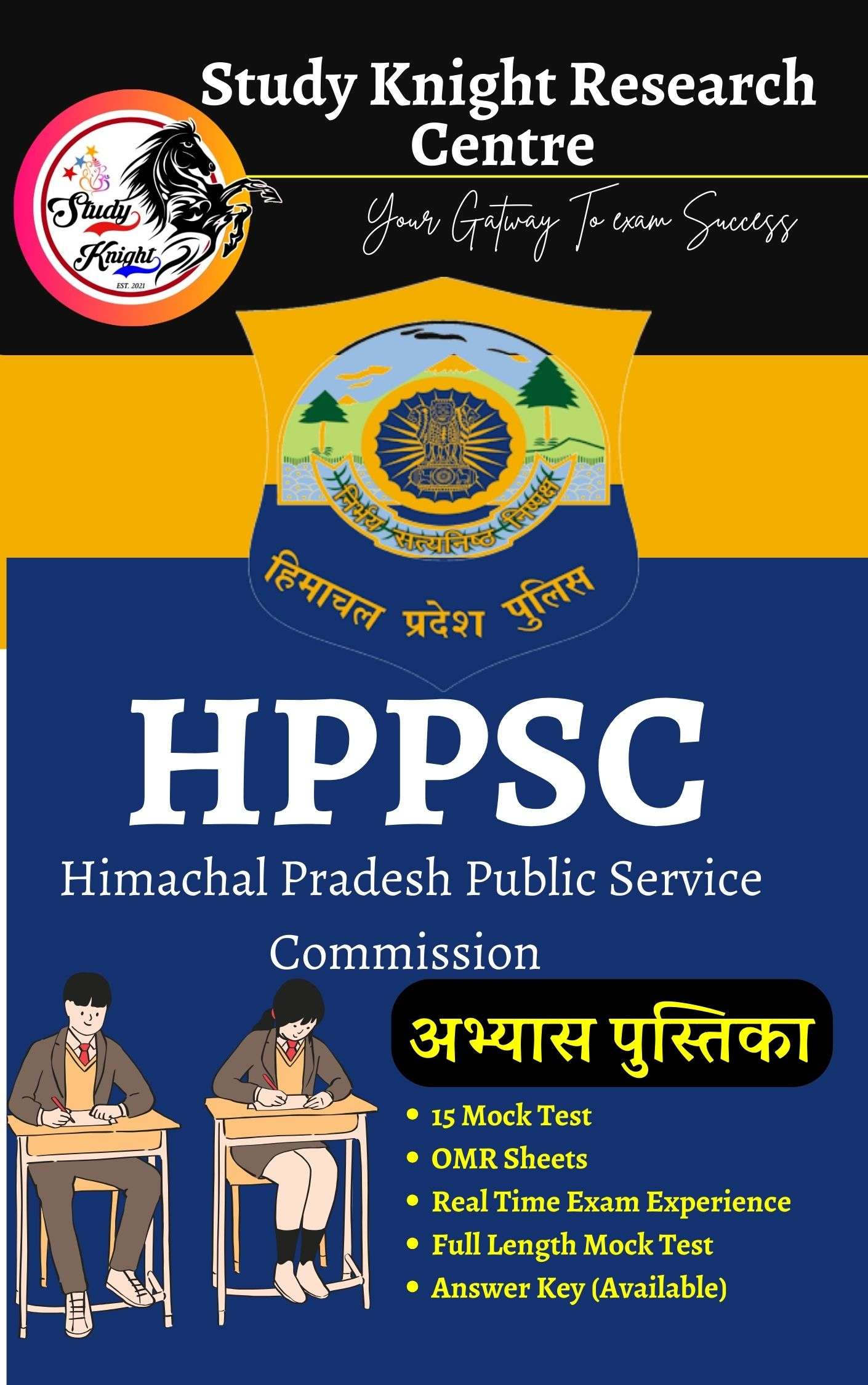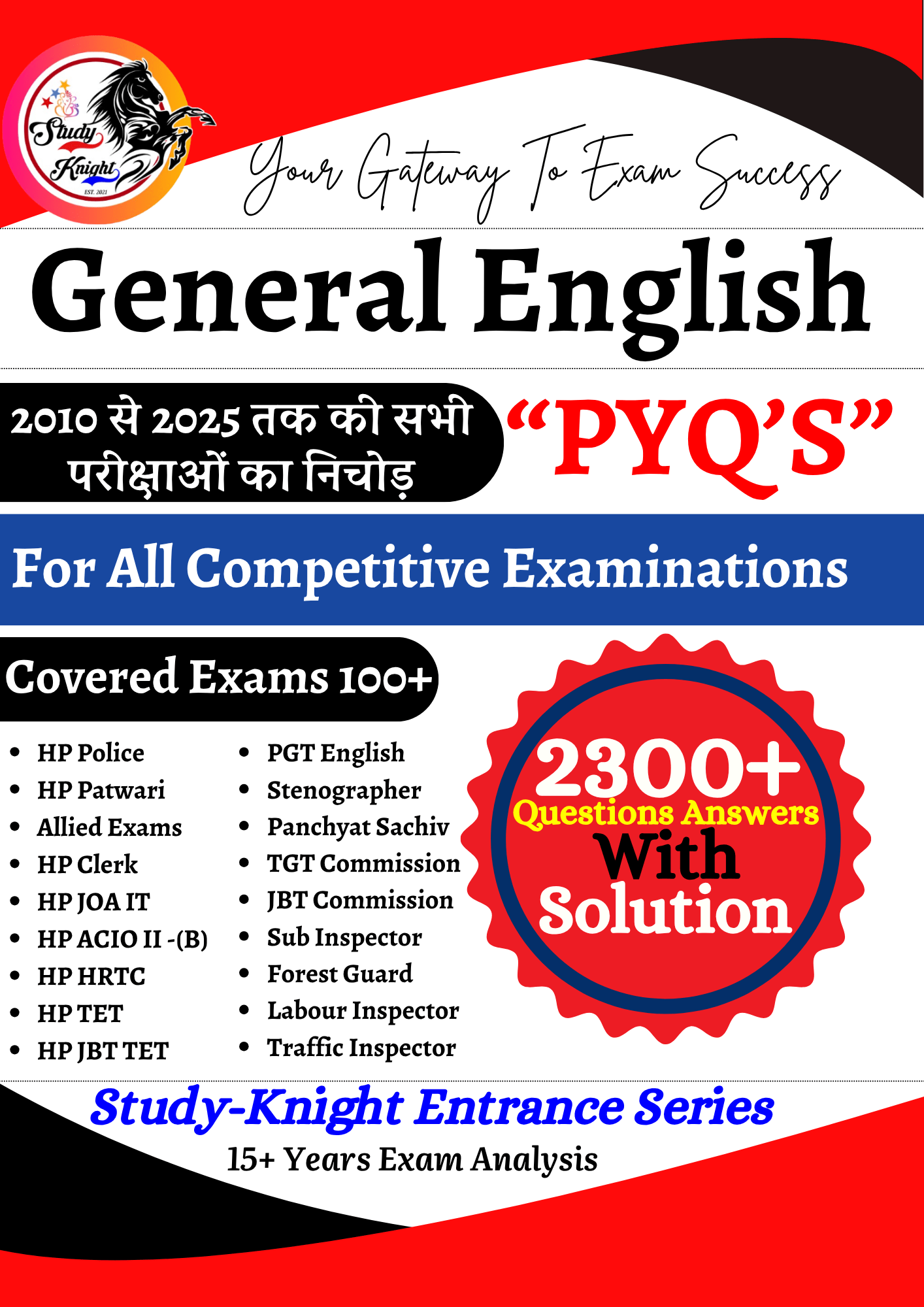Plant Physiology
Q)1.परासरण की परिभाषा है – The definition of osmosis is
A). एक अर्द्धपारगभय कला में होकर विलेय का प्रवाह /flow of solute through a semipermeable membrane B). कला के बगैर जल का प्रवाह / Flow of water without art C). अर्द्धपारगभ्य कला में होकर कम से अधिक सांद्रता की ओर विलायक (जल) का प्रवाह /Flow of solvent (water) through the semi-permeable membrane from the point of least concentration to the point of maximum concentration D). उपर्युक्त में कोई नहीं /None of the above
Answer :- अर्द्धपारगभ्य कला में होकर कम से अधिक सांद्रता की ओर विलायक (जल) का प्रवाह /Flow of solvent (water) through the semi-permeable membrane from the point of least concentration to the point of maximum concentration
Explanation :- परासरण (Osmosis) दो भिन्न सान्द्रता वाले घोलों के बीच होनेवाली एक विशेष प्रकार की विसरण क्रिया है जो एक अर्धपारगम्य झिल्ली के द्वारा होती है। इसमें विलायक (घोलक) के अणु कम सान्द्रता वाले घोल से अधिक सान्द्रता वाले घोल की ओर गति करते हैं।Osmosis is a special type of diffusion process between two different concentration solutions which occurs through a semipermeable membrane. In this, the molecules of the solvent (solvent) move from the solution of lower concentration to the solution of higher concentration.
Q)2.अधिक लवण वाले विलयन में एक कोशिका को रखने पर वह सिकुड़ जाती है , क्योंकि -A cell shrinks when it is placed in a solution containing a lot of salt, because –
A). लवणीय जल कोशिका में प्रवेश करता है /Salt water enters the cell B). जल बाह्य परासरण द्वारा बाहर निकलता है /Water moves out by external osmosis C). कोशिका द्रव्य विघटित हो जाता है /Cytoplasm disintegrates D). खनिज लवण कोशिका भीति को तोड़ देता है / Mineral salts break down the cell wall
Answer :- जल बाह्य परासरण द्वारा बाहर निकलता है /Water moves out by external osmosis
Explanation :- अधिक लवण वाले विलयन में एक कोशिका को रखने पर वह सिकुड़ जाती है, क्योंकि जल बाह्य परासरण द्वारा बाहर निकलता है।When a cell is placed in a high salt solution, it shrinks as water moves out by external osmosis.
Q)3.यदि एक कोशिका आकार में न्यूनीकृत होती है , जब यह एक विलयन में सब रख दी जाती है। ऐसा विलयन होता है -If a cell is reduced in size when it is placed in a solution. Such a solution is
A). हाइपोटोनिक /Hypotonic B). हाईपरटोनिक /Hypertonic C). आइसोटोनिक /Isotonic D). संतृप्त /Saturated
Answer :- हाईपरटोनिक /Hypertonic
Explanation :- हाइपर ऊपर या अत्यधिक के लिए एक और शब्द है। हाइपरटोनिक समाधानों में सेल की तुलना में विलेय (ग्लूकोज या नमक) की उच्च सांद्रता होगी। विलेय वे तत्व हैं जो एक विलायक में भंग हो जाते हैं, जिससे एक समाधान बनता है। हाइपरटोनिक समाधान में, विलेय की सांद्रता इसके अंदर की तुलना में कोशिका के बाहर अधिक होती है। जब एक सेल एक हाइपरटोनिक समाधान में डूब जाता है तो एक आसमाटिक शिफ्ट होगा और पानी के अणु सेल से बाहर निकलेंगे ताकि विलेय पदार्थ की एकाग्रता को संतुलित किया जा सके और सेल के आकार में संकोचन हो ।Hyper is another word for above or excessive. Hypertonic solutions will have a higher concentration of solute (glucose or salt) than the cell. Solutes are substances that dissolve in a solvent, forming a solution. In a hypertonic solution, the concentration of solute is higher outside the cell than inside it. When a cell is immersed in a hypertonic solution an osmotic shift will occur and water molecules will move out of the cell to balance the concentration of solutes and the cell will shrink in size.
Q)4.एक कोशिका आयतन में बढती है, जब यह रखी जाती है -A cell increases in volume when it is placed in –
A). एक समपरासरी विलयन में / In an isotonic solution B). एक अतिपरासरी विलयन में / In a hypertonic solution C). एक अल्पपरासरी विलयन में / In a hypotonic solution D). इनमे से कोई नहीं / None of these
Answer :- एक अल्पपरासरी विलयन में / In a hypotonic solution
Explanation :- जिस विलयन का परासरण दाब का मान अपेक्षाकृत कम होता है उस विलयन को अल्प परासरी विलयन कहते है।The solution whose value of osmotic pressure is relatively less, that solution is called a hypoosmotic solution.
Q)5.बीज फूलते है, जब जल में रखे जाते हैं -Seeds swell when kept in water
A). प्रसारण के कारण /Due to broadcast B). अंत: शोषण के कारण /Due to under exploitation C). जलीय अपघटन के कारण /Due to hydrolysis D). जीवद्रव्यकुंचन के कारण /Due to plasmolysis
Answer :- अंत: शोषण के कारण /Due to under exploitation
Explanation :- अंतः शोषण एक विलयन के गठन के बिना पदार्थों से पानी की सोखने की प्रक्रिया है। पानी में डूबे जब बीज की सूजन अंतः शोषण का एक उदाहरण है। अंतः शोषण कोशिका की मात्रा में अस्थायी वृद्धि हुई है। अंतः शोषण प्रक्रिया के दौरान ऊर्जा की आवश्यकता नहीं है कि सामग्री की एक निष्क्रिय परिवहन है। पानी अंतः शोषण पदार्थ अंतः शोषक कहा जाता है और आत्मसात किया जाता है, जो तरल पी लेनेवाला कहा जाता है।Adsorption is the process of sorption of water from substances without the formation of a solution. The swelling of seeds when immersed in water is an example of imbibition. There is a temporary increase in the volume of the endosperm cell. Endosorption is a passive transport of materials that does not require energy during the process. Substances that absorb water are called adsorbents and are assimilated, which are called adsorbents.
Q)6.लकड़ी के बने दरवाजों का वर्षा ऋतू में फूलना होता है -Doors made of wood swell in the rainy season.
A). अंत: प्रसारण के कारण /Due to internal transmission B). अंत: शोषण के कारण /Due to under exploitation C). केशिक्त्व के कारण /Due to capillarity D). विजिवद्रव्यकुंचन के कारण / Due to vasoconstriction
Answer :- अंत: शोषण के कारण /Due to under exploitation
Explanation :- वर्षा ऋतू में लकड़ी से बने दरवाजों के फूलने का कारण अंतः शोषण है। यह एक विशेष प्रकार का विसरण है। जब ठोस एवं कोलाइडरा द्वारा पानी को अवशोषित किया जाता है तो इसके कारण उसके आयतन में वृद्धि होती है। अतः शोषण के प्रमुख उदाहरणों में बीजों और सुखी लकड़ियों द्वारा जल का अवशोषण है।The cause of swelling of wooden doors in the rainy season is internal exploitation. This is a special type of diffusion. When water is absorbed by solids and colloids, it causes an increase in their volume. Therefore, the main examples of sorption are the absorption of water by seeds and dry wood.
Q)7.उर्वरकों का अतिरिक्त मात्रा में प्रयोग पौधों की मृत्यु का कारण बनता है -Excess use of fertilizers causes death of plants.
A). अंत: प्रसारण के कारण /Due to internal transmission B). बाह्य परासरण के कारण /Due to external osmosis C). अंत: शोषण के कारण /Due to under exploitation D). स्फीति के कारण /Due to inflation
Answer :- बाह्य परासरण के कारण /Due to external osmosis
Explanation :- उर्वरक (Fertilizers) कृषि में उपज बढ़ाने के लिए प्रयुक्त रसायन हैं जो पेड-पौधों की वृद्धि में सहायता के लिए इस्तेमाल किए जाते हैं। उर्वरक, पौधों के लिये आवश्यक तत्वों की तत्काल पूर्ति के साधन हैं लेकिन इनके प्रयोग के कुछ दुष्परिणाम भी हैं। ये लंबे समय तक मिट्टी में बने नहीं रहते हैं। सिंचाई के बाद जल के साथ ये रसायन जमीन के नीचे भौम जलस्तर तक पहुँचकर उसे दूषित करते हैं। मिट्टी में उपस्थित जीवाणुओं और सुक्ष्मजीवों के लिए भी ये घातक साबित होते हैं।• बाह्य परासरण- परासरण क्रिया द्वारा कोशिकाओं या ऊतकों से जल का निकास (बहिर्गमन) बाह्य परासरण कहलाता हैFertilizers are chemicals used in agriculture to increase yields, which are used to help plant growth. Fertilizers are the means of immediate supply of essential elements for plants, but there are some side effects of their use. They do not remain in the soil for long. After irrigation, these chemicals along with water reach the ground water level below the ground and contaminate it. They also prove to be fatal for the bacteria and micro-organisms present in the soil. • External osmosis- The outflow of water from cells or tissues by osmosis is called external osmosis.
Q)8.पौधों में जल का परिवहन होता है -Water is transported in plants by –
A). कैम्बियम द्वारा /By cambium B). फ्लोएम द्वारा /Phloem C). जाइलम द्वारा / Xylem D). बाह्य त्वचा द्वारा / Epidermal
Answer :- जाइलम द्वारा / Xylem
Explanation :- जाइलम ( एक संवहन ऊतक है, जो पादपों में पाया जाता है। यह एक प्रकार का जटिल स्थाई ऊतक है।• पौधों में जाइलम के समान ही एक दूसरा संवहन ऊतक फ्लोएम भी पाया जाता है।जाइलम संवहन वंडल के अन्दर पाया जाता है।• यह ऊतक पौधों में जल के संवहन में प्रमुख भुमिका का निर्वहन करता है।रसारोहण की क्रिया जाइलम ऊतक के भीतर से होती है।Xylem is a vascular tissue found in plants. It is a complex permanent tissue. Similar to xylem, another vascular tissue phloem is also found in plants. Xylem is found inside the vascular bundle. This tissue plays a major role in the conduction of water in plants. The action of sap uptake takes place from within the xylem tissue.
Q)9.भूमि में पौधों की जड़ों के लिए उपलब्ध जल होता है – The water available to the roots of plants in the soil is
A). कोशिका जल / Cell water B). आर्द्रताग्राही जल /Hygroscopic water C). गुरुत्वीय जल / Gravity water D). इनमे से कोई नहीं /None of these
Answer :- कोशिका जल / Cell water
Explanation :- कोशिका जल पौधों की जड़ों के लिए भूमि में उपस्थित होता है।Cell water is present in the soil for the roots of plants.
Q)10.पौधों की वृद्धि के लिए कितने आवश्यक तत्वों की जरूरत होती है ?How many essential elements are required for the growth of plants?
A). 6 B). 10 C). 17 D). 21
Answer :- 17
Explanation :- पादप पोषण (Plant Nutrition) के अन्तर्गत पादपों के विकास के लिए आवश्यक रासायनिक तत्त्वों एवं यौगिकों का अध्ययन किया जाता है। सत्रह (17) अत्यावश्यक पादप-पोषक तत्व हैं। कार्बन, आक्सीजन, तथा जल के अलावा निम्नलिखित खनिज तत्त्व आवश्यक हैंप्राथमिक पोषक तत्त्व : नाइट्रोजन (N), फास्फोरस (P), पोटाश (K)• द्वितीयक पोषक तत्त्व: कैल्सियम (Ca), सल्फर (S), मैगनीशियम (Mg), सिलिकन (Si)तृतीय पोषक तत्त्व : [[बोबोरॉन B), क्लोरीन (CI), मैगनीज (Mn), लोहा (Fe), जस्ता (Zn), ताँबा (Cu), मॉलीब्लेडनम (Mo), निकल (Ni), सेलेनियम (Se) और सोडियम (Na)Under Plant Nutrition, chemical elements and compounds necessary for the growth of plants are studied. There are seventeen (17) essential plant nutrients. In addition to carbon, oxygen, and water, the following minerals are essential: • Primary nutrients: Nitrogen (N), Phosphorus (P), Potash (K) • Secondary nutrients: Calcium (Ca), Sulfur (S), Magnesium (Mg), Silicon (Si) Tertiary Nutrients: [[Boboron B], Chlorine (CI), Manganese (Mn), Iron (Fe), Zinc (Zn), Copper (Cu), Molybdenum (Mo), Nickel (Ni), Selenium (Se) and sodium (Na)











